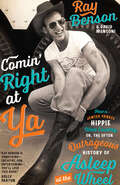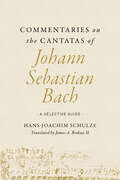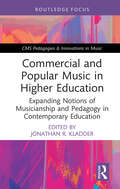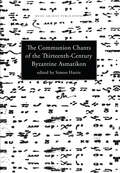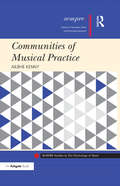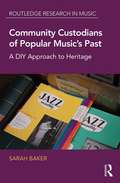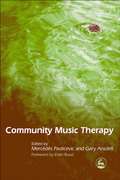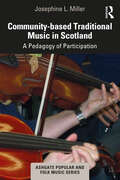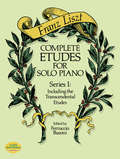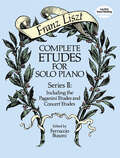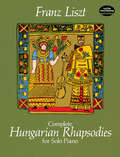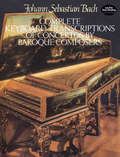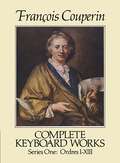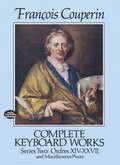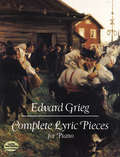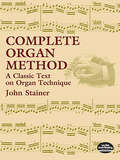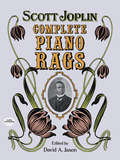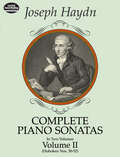- Table View
- List View
Comfortably Numb: The Inside Story of Pink Floyd
by Mark BlakeMark Blake draws on his own interviews with band members as well as the group's friends, road crew, musical contemporaries, former housemates, and university colleagues to produce a riveting history of one of the biggest rock bands of all time. We follow Pink Floyd from the early psychedelic nights at UFO, to the stadium-rock and concept-album zenith of the seventies, to the acrimonious schisms of the late '80s and '90s. Along the way there are fascinating new revelations about Syd Barrett's chaotic life at the time of Piper at the Gates of Dawn, the band's painstaking and Byzantine recording sessions at Abbey Road, and the fractious negotiations to bring about their fragile, tantalizing reunion in Hyde Park.Meticulous, exacting, and ambitious as any Pink Floyd album, Comfortably Numb is the definitive account of this most adventurous-and most English-rock band.
Comin' Right at Ya: How a Jewish Yankee Hippie Went Country, or, the Often Outrageous History of Asleep at the Wheel (Brad and Michele Moore Roots Music Series) (Brad and Michele Moore Roots Music Series)
by David Menconi Ray Benson&“Full of humor and humility . . . Since Benson started Asleep at the Wheel as a working-class country band, it&’s one helluva ride worth telling.&” —The Austin Chronicle A six-foot-seven-inch Jewish hippie from Philadelphia starts a Western swing band in 1970. It sounds like a joke but—more than forty years, twenty-five albums, and nine Grammy Awards later—Asleep at the Wheel is still drawing crowds around the world. The roster of musicians who&’ve shared a stage with the Wheel is a who&’s who of American popular music—Van Morrison, Willie Nelson, Dolly Parton, Emmylou Harris, George Strait, Vince Gill, Lyle Lovett, and so many more. And the bandleader who&’s brought them all together is the hippie that claimed Bob Wills&’s boots: Ray Benson. In this hugely entertaining memoir, Benson looks back over his life and wild ride with Asleep at the Wheel from the band&’s beginning in Paw Paw, West Virginia, through its many years as a Texas institution. He vividly recalls all the inevitable ups and downs and changes in personnel and describes the making of classic albums such as Willie and the Wheel and Tribute to the Music of Bob Willsand the Texas Playboys. The ultimate music industry insider, Benson explains better than anyone else how the Wheel got rock hipsters and die-hard country fans to love groovy new-old Western swing. Decades later, they still do. &“Ray Benson is something—creative, fun, entertaining—you&’ll love this book!&” —Dolly Parton &“I&’ve known Ray Benson for over forty years and never could figure out how he does all he does while asleep at the wheel! This book, however, tells how it all went down!&” —Willie Nelson
Comin' Right at Ya: How a Jewish Yankee Hippie Went Country, or, the Often Outrageous History of Asleep at the Wheel (Brad and Michele Moore Roots Music Series) (Brad and Michele Moore Roots Music Series)
by David Menconi Ray Benson&“Full of humor and humility . . . Since Benson started Asleep at the Wheel as a working-class country band, it&’s one helluva ride worth telling.&” —The Austin Chronicle A six-foot-seven-inch Jewish hippie from Philadelphia starts a Western swing band in 1970. It sounds like a joke but—more than forty years, twenty-five albums, and nine Grammy Awards later—Asleep at the Wheel is still drawing crowds around the world. The roster of musicians who&’ve shared a stage with the Wheel is a who&’s who of American popular music—Van Morrison, Willie Nelson, Dolly Parton, Emmylou Harris, George Strait, Vince Gill, Lyle Lovett, and so many more. And the bandleader who&’s brought them all together is the hippie that claimed Bob Wills&’s boots: Ray Benson. In this hugely entertaining memoir, Benson looks back over his life and wild ride with Asleep at the Wheel from the band&’s beginning in Paw Paw, West Virginia, through its many years as a Texas institution. He vividly recalls all the inevitable ups and downs and changes in personnel and describes the making of classic albums such as Willie and the Wheel and Tribute to the Music of Bob Willsand the Texas Playboys. The ultimate music industry insider, Benson explains better than anyone else how the Wheel got rock hipsters and die-hard country fans to love groovy new-old Western swing. Decades later, they still do. &“Ray Benson is something—creative, fun, entertaining—you&’ll love this book!&” —Dolly Parton &“I&’ve known Ray Benson for over forty years and never could figure out how he does all he does while asleep at the wheel! This book, however, tells how it all went down!&” —Willie Nelson
Commando: The Autobiography of Johnny Ramone
by Johnny RamoneA photo-packed memoir by the Ramones guitarist and “true iconoclast” (Publishers Weekly).Raised in Queens, New York, Johnny Ramone founded one of the most influential rock bands of all time, but he never strayed from his blue-collar roots and attitude. He was truly imbued with the angry-young-man spirit that would characterize his persona both on and off stage. Through it all, Johnny kept the band focused and moving forward, ultimately securing their place in music history by inventing punk rock. The Ramones were inducted into the Rock and Roll Hall of Fame in 2002—and two years later, Johnny died of cancer, having outlived two other founding members. Revealing, inspiring, and told on his own terms, this memoir also features Johnny’s assessment of the Ramones’ albums; a number of eccentric Top Ten lists; rare historical artifacts; and scores of personal and professional photos, many of which have never before been published.“Feels like a conversation with Johnny.” —The Boston Globe
Commentaries on the Cantatas of Johann Sebastian Bach: A Selective Guide
by Hans-Joachim SchulzeInternationally recognized Bach authority Hans-Joachim Schulze authored a 225-part series on the cantatas of Johann Sebastian Bach. In this collection, James A. Brokaw II translates a selection of the essays, illuminating a wide range of biographical and cultural features of Bach’s life and creative milieu. Schulze’s lively and engaging discussions provide a wealth of rewarding insights and perspectives focusing on individual cantatas, their texts, and the questions of chronology and context that attend them. The University of Illinois Press has paired the volume with a special web-based companion overseen by the translator and hosted by the Illinois Open Publishing Network. This online resource includes Brokaw’s translations of all 225 of Schulze’s essays alongside digital tools for searching, sorting, and bundling the commentaries according to date of composition, position within the liturgical church year sequence, and librettist.
Commercial and Popular Music in Higher Education: Expanding Notions of Musicianship and Pedagogy in Contemporary Education (CMS Pedagogies & Innovations in Music)
by Jonathan R. KladderCommercial and Popular Music in Higher Education brings together working examples of pedagogy in emerging areas of popular and commercial music to offer practical insights and provide a theoretical framework for today’s music educators. Written by a diverse group of experts, the eight chapters address a range of contemporary contexts, including digital instrument ensembles, digital audio workstations, hip hop courses, pop vocal performance, rock bands, studio production, and more. Considering both the challenges and the benefits of integrating commercial and popular music into teaching, the contributors explore how doing so can enhance student learning. The authors show how a constructivist approach to music pedagogy enables student-led, real-world learning in higher education, and consider how diversity, equity, and inclusion intersect with teaching popular music performance. Compiling experiences and expert resources, this book provides a vital framework for all instructors teaching commercial and popular music.
Communion Chants of the Thirteenth-Century Byzantine Asmatikon (Music Archive Publications #3)
by Simon HarrisThis is a complete edition with critical commentary of the Byzantine Communions in thirteenth-century manuscripts of the Asmatikon, all known sources being used. The chants concerned are the earliest known examples of Communion Chants of the Orthodox Church, and are found in a book which may go back to the rite of St Sophia at Constantinople during the tenth century-the earliest copies of which date from the thirteenth-century and come from South Italy and North Greece. Further more, there are also a few manuscripts from Kiev with text in Church Slavonic and an untranscribable musical notation. This is the first systematic transcription of the Asmatikon ever to be published.
Communities of Musical Practice (SEMPRE Studies in The Psychology of Music)
by Ailbhe KennyEvery day people come together to make music. Whether amateur or professional, young or old, jazz enthusiasts or rock stars, what is common to all of these musical groups is the potential to create communities of musical practice (CoMP). Such communities are created through practices: ways of engaging, rules, membership, roles, identities and learning that is both shared through collective musical endeavour and situated within certain sociocultural contexts. Ailbhe Kenny investigates CoMP as a rich model for community engagement, musical participation and transformation in music education. This book is the first to produce a valid and reliable in-depth study of music communities using a community of practice (CoP) framework - in this case focusing on the social process of musical learning. Employing case study research within Ireland, three illustrations from particular sociocultural, genre-specific, economic and geographical contexts are examined: an adult amateur jazz ensemble, a youth choir, and an online Irish traditional music web platform. Each case is analysed as a distinct community and phenomenon offering sharpened understandings of each sub-culture with specific findings presented for each community.
Community Custodians of Popular Music's Past: A DIY Approach to Heritage (Routledge Research in Music)
by Sarah BakerThis book examines do-it-yourself (DIY) approaches to the collection, preservation, and display of popular music heritage being undertaken by volunteers in community archives, museums and halls of fame globally. DIY institutions of popular music heritage are much more than ‘unofficial’ versions of ‘official’ institutions; rather, they invoke a complex network of affect and sociality, and are sites where interested people – often enthusiasts – are able to assemble around shared goals related to the preservation of and ownership over the material histories of popular music culture. Drawing on interviews and observations with founders, volunteers and heritage workers in 23 DIY institutions in Australasia, Europe and North America, the book highlights the potentialities of bottom-up, community-based interventions into the archiving and preservation of popular music’s material history. It reveals the kinds of collections being housed in these archives, how they are managed and maintained, and explores their relationship to mainstream heritage institutions. The study also considers the cultural labor of volunteers in the DIY institution, arguing that while these are places concerned with heritage management and the preservation of artefacts, they are also extensions of musical communities in the present in which activities around popular music preservation have personal, cultural, community and heritage benefits. By looking at volunteers’ everyday interventions in the archiving and curating of popular music’s material past, the book highlights how DIY institutions build upon national heritage strategies at the community level and have the capacity to contribute to the democratization of popular music heritage. This book will have a broad appeal to a range of scholars in the fields of popular music studies, musicology, ethnomusicology, archive studies and archival science, museum studies, critical heritage studies, cultural studies, cultural sociology and media studies.
Community Music Therapy
by Gary Ansdell Mercedes PavlicevicMusic therapists from around the world working in conventional and unconventional settings have offered their contributions to this exciting new book, presenting spirited discussion and practical examples of the ways music therapy can reflect and encourage social change. From working with traumatized refugees in Berlin, care-workers and HIV/AIDS orphans in South Africa, to adults with neurological disabilities in south-east England and children in paediatric hospitals in Norway, the contributors present their global perspectives on finding new ways forward in music therapy. Reflecting on traditional approaches in addition to these newer practices, the writers offer fresh perceptions on their identity and role as music therapists, their assumptions and attitudes about how music, people and context interact, the sites and boundaries to their work, and the new possibilities for music therapy in the 21st century. As the first book on the emerging area of Community Music Therapy, this book should be an essential and exciting read for music therapists, specialists and community musicians.
Community-Engaged Performance Tours: A Guide for Music Ensemble Directors and Educators
by James SpinazzolaCommunity-Engaged Performance Tours addresses the role of performance touring as a form of classroom and community engagement. Performance tours have long been a part of the collegiate and high school music ensemble experience, bringing student bands, choirs, and orchestras into connection with a wide variety of audiences, venues, and cultural contexts. This book presents a new approach to the performance tour that integrates touring with community engagement and service-learning. Emphasizing reciprocity, cross-cultural exchange, and global awareness, the author addresses how visiting ensembles can work with host communities instead of performing for them. The book includes student and community perspectives and case studies from the author’s experience leading university wind symphony tours in Haiti and the Dominican Republic, and provides a practical and hands-on model for ensemble leaders and educators.
Community-based Traditional Music in Scotland: A Pedagogy of Participation (Ashgate Popular and Folk Music Series)
by Josephine L. MillerThis book examines the community-based learning and teaching of ‘traditional’ music in contemporary Scotland, with implications for transnational theoretical issues. The book draws on a broad range of scholarship and a local case study of a large organisation. A historical perspective provides an overview of new educational formats emerging from the mid-twentieth century folk music revival in Scotland. Practices through which participants encounter and perpetuate the idiom of traditional music include social music-making, learning by ear and participatory and presentational elements of musical performances. Individuals are shown as combining these aspects with their own learning strategies to participate in the contemporary community of practice of traditional music. The work also discusses how experiences of learning contribute to identity formation, including the role and practice of ‘tutors’ of traditional music. The author proposes conceptualising the teaching and learning of traditional music in community-based organisations as a ‘pedagogy of participation’.
Comparing Notes: How We Make Sense Of Music
by Adam OckelfordHow does music work? Indeed, what is (or isn’t) music? We are all instinctively musical, but why? Adam Ockelford has the answers. A tap of the foot, a rush of emotion, the urge to hum a tune; without instruction or training we all respond intuitively to music. Comparing Notes explores what music is, why all of us are musical, and how abstract patterns of sound that might not appear to mean anything can, in fact, be so meaningful. Taking the reader on a clear and compelling tour of major twentieth century musical theories, Professor Adam Ockelford arrives at his own important psychologically grounded theory of how music works. From pitch and rhythm to dynamics and timbre, he shows how all the elements of music cohere through the principle of imitation to create an abstract narrative in sound that we instinctively grasp, whether listening to Bach or the Beatles. Authoritative, engaging, and full of wonderful examples from across the musical spectrum, Comparing Notes is essential reading for anyone who’s ever loved a song, sonata, or symphony, and wondered why.
Competition Policy and the Music Industries: A Business Model Perspective
by Jenny KanellopoulouThis book explores the nature of the music industries before and after the digital revolution from the point of view of the consumer, and explores the question of whether there is a role for competition policy intervention in the music industries. Considering the historically consolidated environment of the music industries, and their rapidly evolving business models in the 21st century, the author argues that there is a need for updated competition design to promote consumer welfare and competition in these markets. Opening a much-needed interdisciplinary dialogue across music studies, business, and law, the book applies business model literature to antitrust law in the context of the music industries. It offers a comprehensive history of encounters between the music industry and antitrust and regulatory authorities in the US, UK, and EU, from the payola scandals of the 1950s to the merger of Live Nation and Ticketmaster in 2010, showing how even as business models in the industry have changed, it has repeatedly moved toward consolidation with little regulation. Drawing on this history, it considers how competition policy can foster innovation and safeguard consumer interests in the music markets of the future. Offering new analytical and methodological tools, this book is relevant to those studying the music industries from business, legal, and cultural perspectives.
Complete Etudes for Solo Piano, Series I: Including the Transcendental Etudes (Dover Music for Piano)
by Franz Liszt Ferruccio BusoniLiszt's reputation as perhaps the greatest pianist of all time is powerfully supported by his dazzling body of work for solo piano. The undiminished popularity of his etudes with pianists and audiences alike have made them among the most performed and recorded works for solo piano in the romantic repertoire.This superbly produced yet inexpensive two-volume edition presents all of Liszt's etudes as edited by the great pianist, composer, and musical scholar Ferruccio Busoni for the Franz Liszt Society and published by Breitkopf and Härtel in Leipzig in 1910-11.This first volume, Series I, includes many of Liszt's most inspired piano works. The Etude en 12 Exercises and the 12 Grandes Etudes can both be regarded as early versions of the Etudes d' Exécution Transcendante (Transcendental Etudes). Each set is a highly successful work in its own terms, and both generally surpass the famous final version in difficulty. The separate "Mazeppa" is yet another working of one of the etudes from these sets. The individual etudes range dramatically in style from the delicate refinement of "Feux Follets" to the startling bravura of "Wilde Jagd" (both from the Transcendental Etudes). Each will bring to pianists and their listeners a moving encounter with the genius of this towering musical personality.
Complete Etudes for Solo Piano, Series II: Including the Paganini Etudes and Concert Etudes (Dover Classical Piano Music)
by Franz Liszt Ferruccio BusoniLiszt's reputation as perhaps the greatest pianist of all time is powerfully supported by his dazzling body of work for solo piano. The undiminished popularity of his etudes with pianists and audiences alike have made them among the most performed and recorded works for solo piano in the romantic repertoire.This superbly produced yet inexpensive two-volume edition presents all of Liszt's etudes as edited by the great pianist, composer, and musical scholar Ferruccio Busoni for the Franz Liszt Society and published by Breitkopf and Härtel in Leipzig in 1910-11.This second volume, Series II, includes many of Liszt's most important piano works. Liszt's creative method can be observed in his reworking of the Etudes d' Exécution Transcendante d'après Paganini into the Grande Etudes de Paganini (better known as simply the Paganini Etudes), and the similar revision of the "Morceau de Salon" into "Ab Irato." The separate etudes cover a wide stylistic range, from the dazzling technical display of the most popular of the Paganini Etudes, "La Campanella," to the graceful, restrained lyricism of "Waldesrauschen." Each will bring to pianists and their listeners a moving encounter with the genius of this towering musical personality.
Complete Hungarian Rhapsodies for Solo Piano
by Franz LisztUnrivaled as a virtuoso pianist in his own day -- and perhaps still -- Franz Liszt was a composer of daring originality. He introduced new conceptions of harmony and melody and made radical innovations in piano technique. In a long and prolific career, he produced over 400 works for piano -- brilliant compositions with flashes of eloquence and energy that evoke a full, rich orchestral sound. Best known and best loved are the Hungarian Rhapsodies.Reproduced directly from an authoritative Russian edition of the composer's works, this inexpensive and sturdily bound volume presents the complete Hungarian Rhapsodies for solo piano: No. 1, in C-sharp Minor; No. 2, in C-sharp Minor; No. 3, in B-flat Major; No. 4, in E-flat Major; No. 5, in E Minor; No. 6, in D-flat Major; No. 7, in D Minor; No. 8, in F-sharp Minor; No. 9 (Pester Karneval; "Carnival in Pest"), in E-flat Major; No. 10, in E Major; No. 11, in A Minor; No. 12, in C-sharp Minor; No. 13, in A Minor; No. 14, in F Minor; No. 15, (Rákóczy March), in A Minor; No. 16, in A Minor; No. 17, in D Minor; No. 18, in C-sharp Minor; and No. 19, in D Minor.This edition features English translations of all headings and footnotes that originally appeared in Russian. Published in association with the American Liszt Society, this edition offers all the quality features musicians have long associated with Dover: clear reproduction of musical notation, ample space for analysis, notes, fingerings, etc. Classical pianists, students, teachers, and lovers of music will applaud this handsome volume for playing or study -- a convenient, affordable opportunity to explore some of the great masterpieces inspired by Hungarian gypsy music.
Complete Keyboard Transcriptions of Concertos by Baroque Composers (Dover Music For Piano Ser.)
by Johann Sebastian BachEarly in his career, Bach began to transcribe for the keyboard a number of concertos for violin, oboe, and other instruments by such baroque masters as Vivaldi and Telemann. His purpose: to study and explore the works of other composers as well as to supply good clavier music for his own performances.This collection of sixteen of these celebrated transcriptions is reprinted from the definitive Bach-Gesellschaft edition prepared by Ernst Naumann and presented in a study format designed to give amateur and professional pianists and harpsichordists a lifetime of pleasurable study and use.Six of these glorious keyboard works are known to be transcriptions of Vivaldi violin concertos. Three are based on concertos written by Duke Johann Ernst of Saxe-Weimar, the son of Bach's employer at Weimar. One is based on a violin concerto by Telemann, another on an oboe concerto by Alessandro Marcello, and another on a concerto by Benedetto Marcello. The sources of the remaining works are unknown.Vivaldi, whose music Bach probably first heard in 1712, was to provide a strong influence on the young composer. Bach would eventually assimilate the Italian's style and use it with his own contrapuntal heritage and the Northern idiom in creating what we recognize today as the typical Bach style. These transcriptions, which represent his introduction to the new idiom, richly display a dynamic virtuosity that makes their performance an exhilarating experience.
Complete Keyboard Works, Series One (Dover Classical Piano Music)
by Francois Couperin"His melodic imagination displays admirable freshness. He possesses a delicate harmonic sense. His themes show the inspirations of an impassioned musician: perfectly created, firm in line, vivid, and enduring in color. His art never wavers; it consistently exhibits a magnificent technique." -- John Gillespie, Five Centuries of Keyboard MusicThis famous edition, prepared a century ago by Johannes Brahms and Friedrich Chrysander, presents all of the 27 keyboard suites, or Ordres, by the great French composer François Couperin (1668-1733). Also included are the Allemande and 8 Preludes from Couperin's famous harpsichord treatise, L'Art de Toucher le Clavecin.In these magnificent works (there are over 200 compositions in the two volumes) lies the supreme achievement of French keyboard music, a rich source of subtle, sometimes startling, always pleasurable music for keyboard artists and students at every level of expertise. The moods, rhythms, and melodies of these distinctive compositions range across a broad musical spectrum, from crisp gavottes to noble sarabandes, from flowing allemandes to lively gigues. Some of the pieces suggest carnival merriment, others tender reflection; most have colorful and mysterious names. Couperin's virtuoso command of harpsichord style, his magnificent technique, and ever-fresh melodic imagination pervade them all.Witty, graceful, and tuneful, the keyboard works of Couperin represent a wonderful legacy of late-baroque masterpieces. Beautifully reproduced in this inexpensive edition, they make abundantly clear the justice of Bach's intense admiration for Couperin's music and the aptness of the French master's surname -- "le grand."
Complete Keyboard Works, Series Two: Ordres XIV-XXVII and Miscellaneous Pieces (Dover Classical Piano Music)
by Francois Couperin"His melodic imagination displays admirable freshness. He possesses a delicate harmonic sense. His themes show the inspirations of an impassioned musician: perfectly created, firm in line, vivid, and enduring in color. His art never wavers; it consistently exhibits a magnificent technique." -- John Gillespie, Five Centuries of Keyboard MusicThis famous edition, prepared a century ago by Johannes Brahms and Friedrich Chrysander, presents all of the 27 keyboard suites, or Ordres, by the great French composer François Couperin (1668-1733). Also included are the Allemande and 8 Preludes from Couperin's famous harpsichord treatise, L'Art de Toucher le Clavecin.In these magnificent works (there are over 200 compositions in the two volumes) lies the supreme achievement of French keyboard music, a rich source of subtle, sometimes startling, always pleasurable music for keyboard artists and students at every level of expertise. The moods, rhythms, and melodies of these distinctive compositions range across a broad musical spectrum, from crisp gavottes to noble sarabandes, from flowing allemandes to lively gigues. Some of the pieces suggest carnival merriment, others tender reflection; most have colorful and mysterious names. Couperin's virtuoso command of harpsichord style, his magnificent technique, and ever-fresh melodic imagination pervade them all.Witty, graceful, and tuneful, the keyboard works of Couperin represent a wonderful legacy of late-baroque masterpieces. Beautifully reproduced in this inexpensive edition, they make abundantly clear the justice of Bach's intense admiration for Couperin's music and the aptness of the French master's surname -- "le grand."Note: Series Two contains Ordres 14-27 plus 8 Preludes and Allemande from L'Art de Toucher le Clavecin.
Complete Lyric Pieces for Piano (Dover Music For Piano Ser.)
by Edvard GriegBetween 1867 and 1901, Edvard Grieg (1843–1907) wrote ten sets of little mood pictures for piano that display his great musical gifts at their lyrical best. Charming works of elegant simplicity and warmth, they have become cornerstones of the piano repertoire, favorites of both amateur and professional musicians and their audiences.This authoritative edition presents all 66 of these piano jewels in one finely made yet inexpensive volume. Although technically uncomplicated and reasonably easy to master, the Lyric Pieces evoke with startling freshness a wide emotional range, often bringing into play the varied moods and idioms of Norwegian folk music, an evergreen source of Grieg's inspiration. They vary in mood from the serene sadness of "Berceuse" and the nostalgic yearning of "To Spring" to the fanciful "Elves' Dance" and the joyful "Wedding Day at Troldhaugen."In many passages, the music exhibits harmonies that were novel for the time — harmonies recognizably late-romantic in style, but clearly anticipating the impressionism of Debussy, Ravel, and others. Pianists at every level of accomplishment will find this volume of delightful and moving works, reprinted here from the original editions published by C. F. Peters of Leipzig, a perfect companion for hours of musical pleasure.
Complete Organ Method: A Classic Text on Organ Technique
by F. Flaxington Harker John StainerThis classic method for beginners provides a brief history of the instrument followed by an explanation of organ construction, a thorough discussion of the various stops and their management, and a major section devoted to practical study -- including detailed pedal techniques, precision in manual touch, hand-foot independence, pedal scales, trios, and finger substitution to achieve a perfect legato. With the author's meticulous explanations and accompanying illustrations, students can actually teach themselves to play! Seven organ pieces complete the original edition, including five of Stainer's own works and two pieces by Guilmant; three additional works have been added to round out this Dover edition.
Complete Piano Rags
by Scott JoplinThroughout history, few musical crazes have hit with such impact, had such a heyday and lingered so hauntingly as ragtime. Ragtime arrived on the upswing of Tin Pan Alley, when the popularity of pianos in the home was reaching its peak and an endless stream of sheet music flowed out to meet the demand. In the early 1900s, no name was more prominent on those sheet-music covers and no one wrote ragtime music more brilliantly than Scott Joplin. This wonderful book brings together in one superbly produced playing edition all thirty-eight of Scott Joplin's piano rags, including his six collaborations, plus Joplin's own primer on how to play ragtime, the "School of Ragtime." Each rag has been reprinted, along with its sheet-music cover, from the original publisher's edition. At the Williams' Brothers saloon in Sedalia, Missouri, Scott Joplin was known as "The Entertainer," and in 1897, in the upstairs room called the Maple Leaf Club, he wrote the rag that would one day be the first to sell over a million copies in sheet-music form. In time the "Maple Leaf Rag" also became the most recorded composition on piano roll, with forty known versions. Most of Joplin's other rags were hits as well. Many bear the playful names that were given most rags, names like "The Strenuous Life," "Heliotrope Bouquet," and his last published piece, the "Silver Swan Rag." One of them, "The Entertainer," triggered a major revival of interest in his work when it was incorporated into the score of the popular film The Sting. All of them are here, each bearing the mark of Joplin's supreme originality. As ragtime authority David A. Jasen observes in his Introduction: "For pianists everywhere, this folio contains ragtime masterpieces which, when learned, will provide unlimited joy."
Complete Piano Sonatas
by Alexander ScriabinLike Chopin, Scriabin made the piano the focus of his art. Among the supreme achievements of that art are the ten sonatas he composed between 1892 and 1913, works that abundantly display both his technical virtuosity and the exhilarating emotional gamut he ranged with such individuality.All ten of Scriabin's sonatas are reprinted here from the authoritative Russian edition published in 1964. The first four reveal the influences of the pianism of Chopin and Liszt. The subsequent sonatas richly display Scriabin's emerging impressionist techniques and his deep attraction to mysticism, which progressively conjured a more and more ethereal framework of sound, now brooding and introspective, now rhapsodic and exultant.In both their technical requirements and their emotional demands, these brilliant works will offer pianists a deeply satisfying challenge. Nonpianists will also enjoy this finely made edition, with which they may follow, music in hand, the growing number of loved and recorded performances of these masterpieces.
Complete Piano Sonatas, Volume I: Comb Bound Book (Dover Classical Piano Music #2)
by Joseph HaydnThe towering composer who perfected the early symphonic form and invented the modern string quartet also left his indelible mark on the sonata. During 50 years of inspired creative effort, Haydn experimented constantly with the sonata form, adding a clear thematic structure to the tonal design inherited from earlier composers.This comprehensive new playing edition contains 52 sonatas by the master -- a treasury of keyboard compositions in which echoes of the baroque and harbingers of romanticism blend with the lucidity and elegance of 18th-century classicism. Here is a remarkably convenient and reliable presentation of more than 50 of Haydn's efforts in the form, from the early divertimento-like sonatas to the masterworks of the later years, culminating in the sublime Sonata No. 52 in E-flat Major.Reprinted in two volumes from an authoritative Breitkopf & Härtel edition, the sonatas are arranged in a chronological sequence based on recent scholarship. Extremely clear and readable, with ample space for notes, this Dover edition is a must for serious pianists, students, and music lovers in general. It is an excellent, inexpensive means to study and savor the inventive daring, freedom, and mastery that Haydn brought to the piano sonata.

